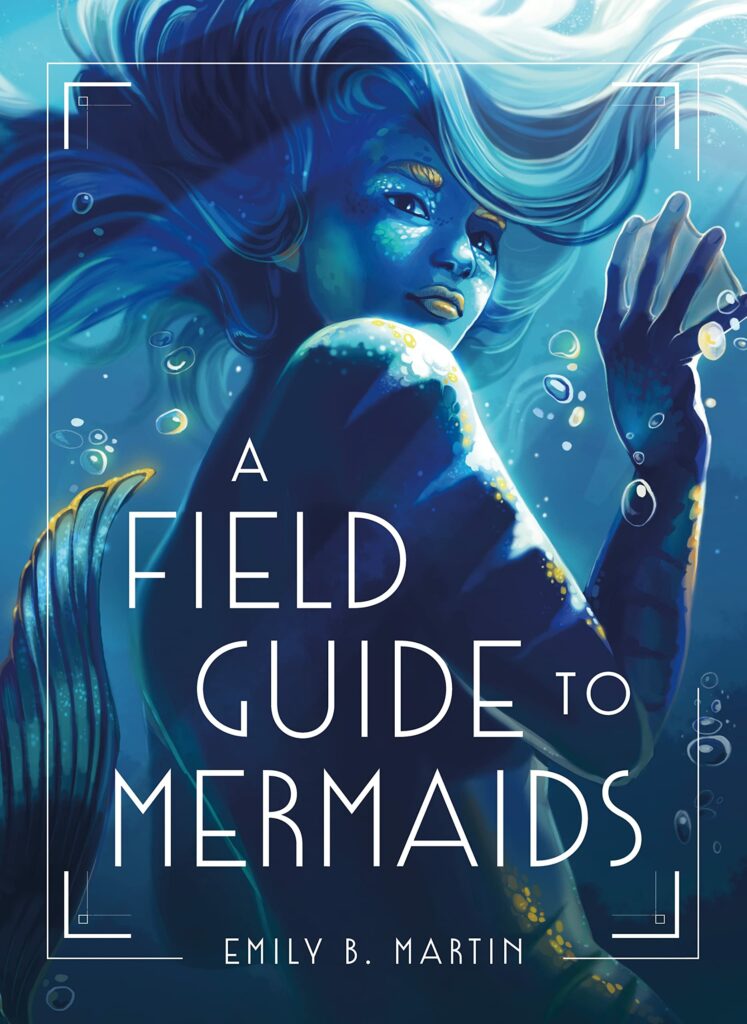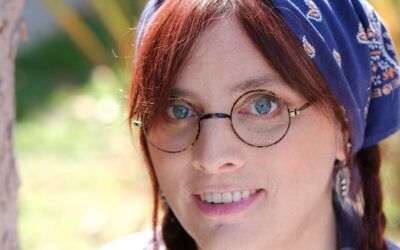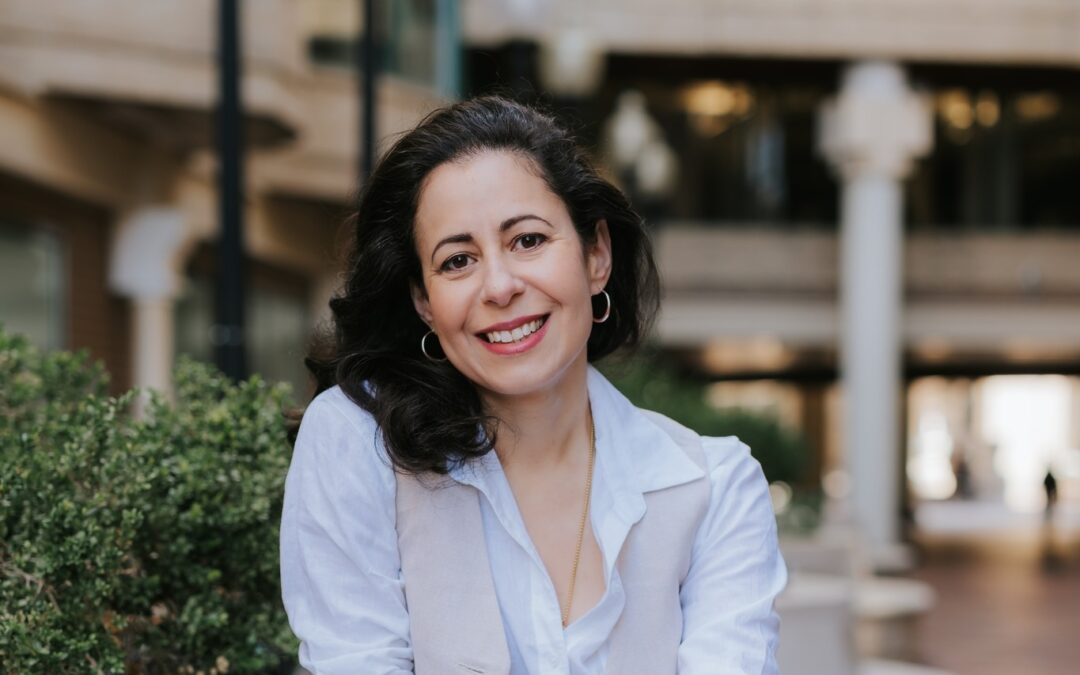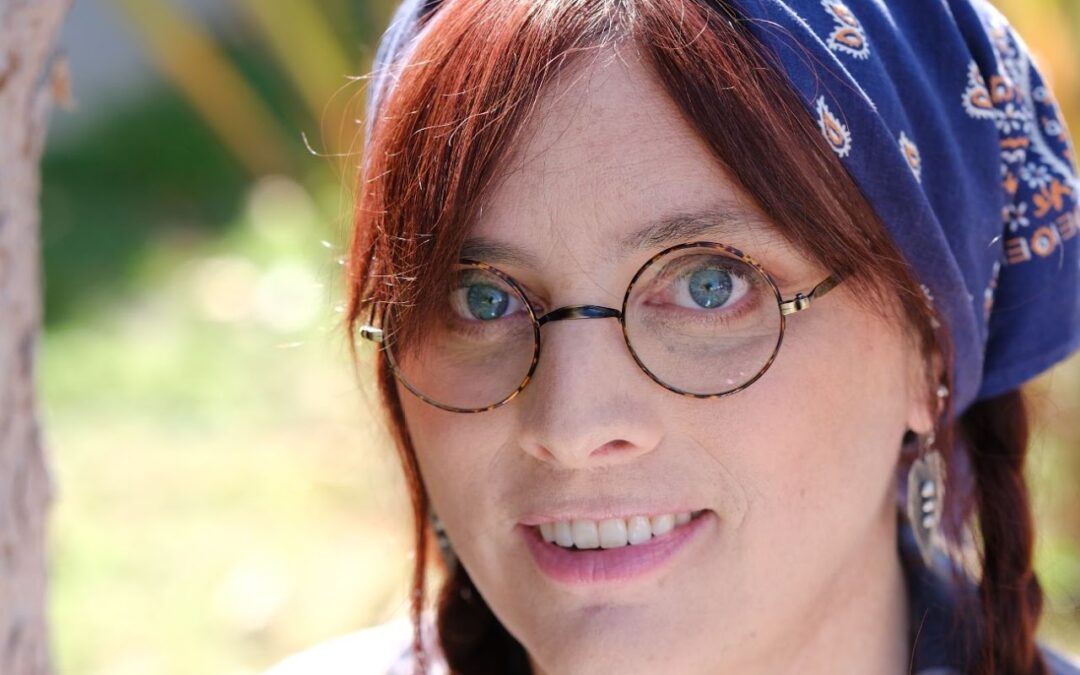Emily B. Martin splits her time between working as a park ranger and an author/illustrator, resulting in her characteristic eco-fantasy adventures. An avid hiker and explorer, her experiences as a ranger help inform the characters and worlds she creates on paper. Her books include Woodwalker, Ashes to Fire, and Creatures of Light. When not patrolling places like Yellowstone, the Great Smoky Mountains, or Philmont Scout Ranch, she lives in South Carolina with her husband, Will, and two daughters, Lucy and Amelia.
I had the opportunity to interview Emily, which you can read below.
First of all, welcome to Geeks OUT! Could you tell us a little about yourself?
I work as a park ranger with the National Park Service during the summertime and as an author/illustrator during the school year. I love baking, hiking, camping, gardening, and being with my family.
What can you tell us about your latest book, A Field Guide to Mermaids? What was the inspiration for this story?
For me, nature and magic have always gone hand in hand. During childhood hikes with my family, my parents would always point out not just the flora and fauna of the region, but of mushrooms that could be fairy houses or ivy drifts that looked like sleeping monsters. When my own kids were born, I continued this tradition of looking for both magic and science outside. When I first started publishing novels, I knew A Field Guide to Mermaids was something I wanted to tackle when I felt ready to both write and illustrate something.
As an author, what drew you to the art of writing?
I’ve always written as a hobby and turned to it particularly when I began staying home after my daughters were born. It helped me maintain a sense of self outside of being a new mom. After a while, my husband asked if I had ever thought about publishing anything. I hadn’t really, but out of curiosity, I started researching what it took. That brought me through the querying and pitching process to my first published book, Woodwalker, then my first trilogy, then my first duology, and now my first picture book.
What drew you to fantasy, particularly mermaids?
Fantasy was a real home for me as a young reader, and now it’s one of many tools I use in my role as an environmental educator. I try to communicate to park visitors that nature is full of magic if we know how to look for it. And everything in nature—plants, animals, people—revolves around water. I hope looking for mermaids will pique kids’ curiosity in the aquatic ecosystems near them.
How would you describe your writing process?
I’m definitely a plotter. I like having my basic structure laid out before writing—otherwise, I tend to be frozen by all the possibilities my plot could take. My sketchbooks play an important role in developing not just my illustrated books, but my novels as well. With Field Guide, I also went in a cyclical process of research – writing – sketching – repeat.
Growing up, were there any stories in which you felt touched by/ or reflected in? Are there any like that now?
I was fortunate growing up to be represented by many of the young heroines in my favorite books, but one character that made me feel especially seen was the character of Queen Helen in the Queen’s Thief series by Megan Whalen Turner. Helen is described as not classically beautiful, with a broken nose and awkward features. In a world of button-nosed, sleek-haired Disney princesses, I used to be self-conscious about my own large, hooked nose and bushy dark hair. I loved reading a character who looked similar and was also skilled, brave, empathetic, and beloved by other characters.
As a writer, who or what would you say are some of your greatest creative influences and/or sources of inspiration in general?
Some of my greatest creative influence comes from being outside and learning about nature, especially for this book. When I first started planning it, I wondered if I would be able to come up with enough habitats and aquatic creatures to fill it out, but every time I started exploring, both outside and in books, I found more and more things I wanted to include.
What are some of your favorite elements of writing? What do you consider some of the most frustrating and/or difficult?
I love research. I love finding new things that spark my imagination and nudge that desire to create, and then I love weaving them into my text and illustrations. I also love the stretches of time where the writing just flows and I can tell all my previous work is coming together.
The frustrating parts for me are all the tertiary parts of writing—keeping up with my finances, tracking sales, maintaining my hardware and software, that kind of thing.
Aside from writing, what are some things you would want others to know about you?
For a long time—like ten years—only my best friend knew I wrote and drew fantasy and fan fiction and art. I was painfully embarrassed about it throughout grade school. Now I love that there’s a huge, proud writing culture built around all the weird niche interests we were into in grade school and how they made us the authors we are today. Dinosaurs! The age of sail! Marching band! The Silmarillion! They’re all in the mix for me.

What’s a question you haven’t been asked yet but that you wish you were asked (as well as the answer to that question)?
What’s my favorite owl? Thank you for asking—I’m partial to the barred owl because their call is just the best and they’re such a quintessential Birds 101 Checklist owl, but I also adore the eastern screech owl, and I love the barn owl for being such a nightmare.
What advice might you have to give for aspiring writers?
For young writers in grade school, my best advice is to just have fun with it! Find a friend to write stories with, write fan fiction, and write without worrying if it’s good or not. All of these things helped me foster my own love of writing without realizing that’s what I was actually doing.
For older writers, it’s helpful to keep your focus on the long game rather than pinning all your hopes and expectations on one manuscript. Writers who expect to publish one novel and rake in the cash/accolades are setting themselves up for stress and disappointment. Adjusting your goals toward slowly building a sturdy career over many books is more realistic and satisfying.
Are there any other projects you are working on and at liberty to speak about?
I always have several other manuscripts going—I have an adult novel with my agent and a middle-grade fantasy in the drafting stage, and then several others in the planning stages.
Finally, what books/authors (related to mermaids or otherwise) would you recommend to the readers of Geeks OUT?
I really love Makiia Lucier, Intisar Khanani, and the aforementioned Megan Whalen Turner. One thing they all have in common is juxtaposing the mundane with the magical, which makes their worlds feel lived in. On a completely different note, I adore Robin Wall Kimmerer’s work on the spiritual and scientific connections between humans and nature.







0 Comments